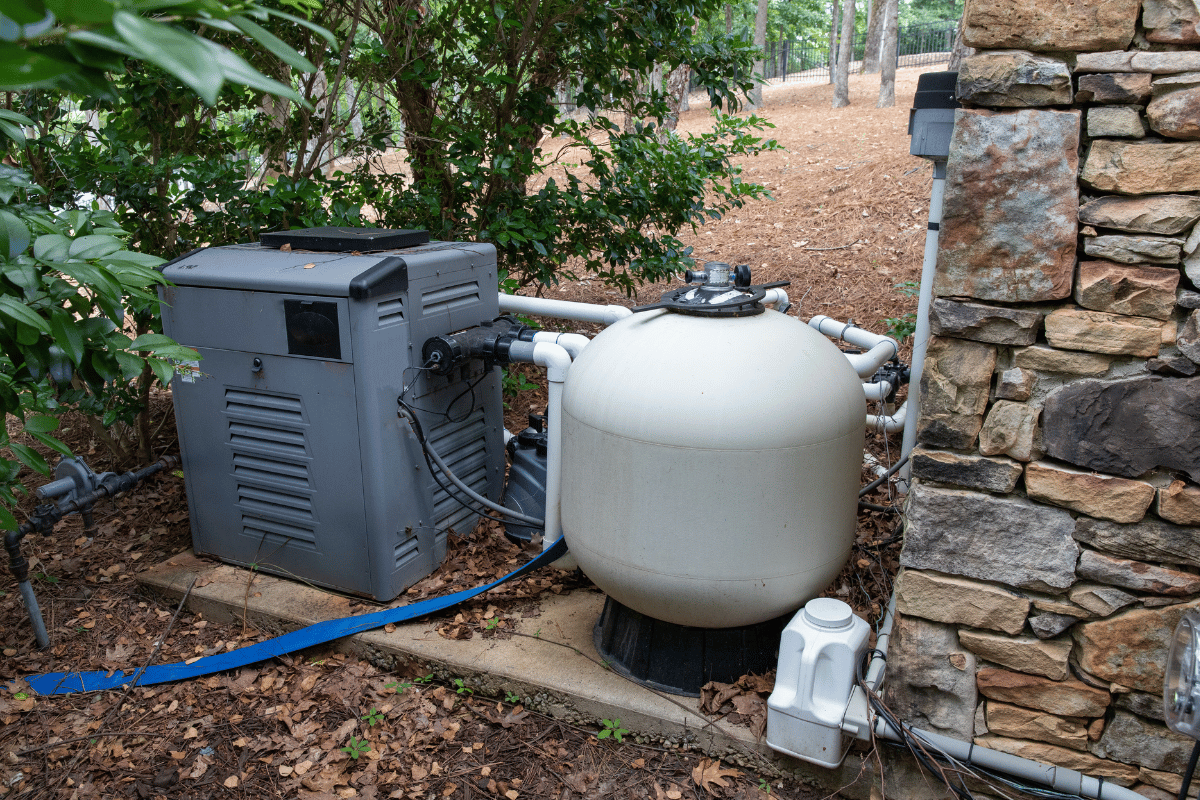News & Articles
Signs You Need to Replace Your Pool Pump Mechanical Seal
1.Visible Water Leaks Around the Pump Housing
- Cause: The most obvious sign of a failing mechanical seal is water dripping or pooling around the pump motor housing. Seals can deteriorate due to age, improper installation, or chemical imbalances in the pool water.
- Consequence: If water seeps past the mechanical seal, it can damage the motor bearings, shaft, and internal components.
2.Rust or Corrosion on the Motor
- Cause: A leaking mechanical seal allows water to enter the motor housing, leading to rust and corrosion. This is especially common if leaks go unnoticed for an extended period.
- Consequence: Corrosion can weaken the motor shaft and other components, eventually causing pump failure.
3.Pump Running Dry or Overheating
- Cause: Mechanical seals rely on proper lubrication from the water. If the pump runs dry—due to low water levels, clogged filters, or improper priming—it can overheat the seal, causing it to warp or crack.
- Consequence: Overheated seals lose their ability to hold back water, leading to leaks and further pump damage.
4.Unusual Noise or Humming
- Cause: While mechanical seals don’t cause noise directly, a leak can lead to water intrusion into the motor, which affects bearings and creates a grinding or humming sound.
- Consequence: Ignoring the issue can escalate into full motor failure, requiring costly replacements.
5.Reduced Pump Performance
- Cause: Leaking water reduces the pump’s ability to maintain proper suction and pressure. This often indicates that the seal has failed and is allowing air into the system.
- Consequence: Poor water circulation leads to dirty, unfiltered pool water and inefficient operation.
How to Replace a Pool Pump Mechanical Seal
If you’ve noticed any of the signs above, it’s time to replace your pool pump’s mechanical seal. Replacing the seal is a straightforward process with the right tools and steps.
Tools & Materials You’ll Need:
- Replacement Type 6 mechanical seal (check your pump model for compatibility)
- Screwdrivers (flathead and Phillips)
- Adjustable wrench or socket set
- Needle-nose pliers
- Silicone lubricant (for the seal)
- Clean rags or towels
Step-by-Step Instructions:
1.Turn Off the Power
- Shut off the power to the pump at the circuit breaker to ensure your safety.
2.Drain the Pump and Disconnect It
- Remove the pump from the plumbing system and drain any remaining water by unscrewing the drain plugs.
3.Disassemble the Pump Housing
- Unscrew the bolts holding the pump housing together. Remove the diffuser to expose the impeller.
4.Remove the Impeller
- Hold the motor shaft steady using a wrench or pliers on the rear shaft. Carefully unscrew the impeller from the shaft (some models may have an impeller screw that needs to be removed first).
5.Access the Mechanical Seal
- Behind the impeller, you’ll see the mechanical seal assembly: a two-part component consisting of a stationary ceramic face and a rotating ring.
6.Remove the Old Seal
- Carefully pry out the old seal components using pliers or a flathead screwdriver. Be gentle to avoid damaging the seal seat or motor shaft.
7.Install the New Seal
- Apply a small amount of silicone lubricant to the rubber parts of the new mechanical seal (not the ceramic face).
- Press the stationary ceramic piece into the seal housing, ensuring it’s clean and seated flat.
- Slide the rotating ring onto the motor shaft, with the polished face toward the ceramic piece.
8.Reassemble the Pump
- Reinstall the impeller, diffuser, and pump housing. Tighten all bolts securely, ensuring proper alignment.
9.Reconnect and Test the Pump
- Reattach the pump to the plumbing, prime it with water, and restore power. Turn on the pump and check for leaks or unusual noises.
Common Mistakes to Avoid
- Failing to Turn Off Power: Always disconnect power to avoid electrical hazards.
- Skipping Lubrication: Don’t forget to apply silicone lubricant for a proper seal fit.
- Damaging the Ceramic Face: Avoid touching or scratching the polished surfaces of the mechanical seal, as this will reduce its effectiveness.
- Forcing Components into Place: Apply gentle pressure when installing the new seal to prevent damage.
- Running the Pump Dry: Always ensure the pump is primed with water before starting to prevent seal damage.\
Numbat's Extensive Mechanical Seal Range
Numbat offers a wide variety of high-quality mechanical seals that are compatible with any brand of pool pump. With over 4,500 seals designed for a range of applications, including agricultural, industrial, and residential use, Numbat brings unmatched expertise in seal technology.
For example, our Type 6 mechanical seal is available in CCN, SSV, and CCV variations across 13 sizes. These seals feature a rubber bellow and an optional PAC seal (metal shroud for a tighter seal), ensuring optimal performance and durability.
.png)
Numbat mechanical seals are the reliable, economical option for any pool pump. Best of all, they are available through your local pool or pump shop, so you can easily find the right seal for your needs. Rest assured, these seals are in stock and ready for quick delivery!
Conclusion
Your pool pump’s mechanical seal is a small but essential component that keeps water where it belongs—inside the pump. Recognizing the signs of a failing seal, such as leaks, rust, and overheating, can help you address issues early and prevent further damage. By following the steps outlined above, you can replace the mechanical seal and restore your pool pump’s performance.
Regular maintenance and timely repairs will ensure your pool stays clean, safe, and enjoyable for years to come. If you’re unsure about replacing the seal yourself, consult a professional to keep your pool pump in top condition.


.png)
